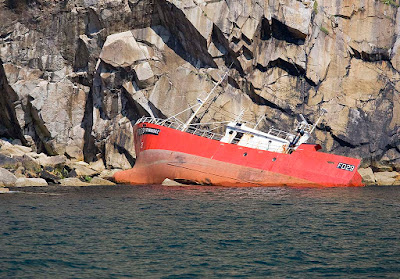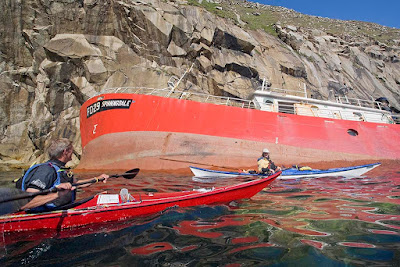
Looking back to the wreck of the Spinningdale and the shelter of Village Bay from the Point of Coll.

As we approached Rubha an Uisge, the most easterly point of Hirta, Stac Lee, Stac an Armin and Boreray came into sight.

Tony in the darkness of Geo nan Sgarbh.

Jennifer in the gap behind Sgeir nan Sgarbh.

Alan under the dark cliffs of Stac a' Langa. Mina Stac is the point on the extreme right. This photo was taken with a 17mm lens to try and get as much of the cliff in as possible. At up to 426m, or 1400 feet, these cliffs are the highest in the British Isles.

Tony and Fiona F coming through the gap behind Mina Stac. The wind gusted strongly through the gaps and the swells were amplified.

Alan with Mina Stac behind and Stac an Armin, Stac Lee and Boreray in the distance.

Our route round Hirta.


















